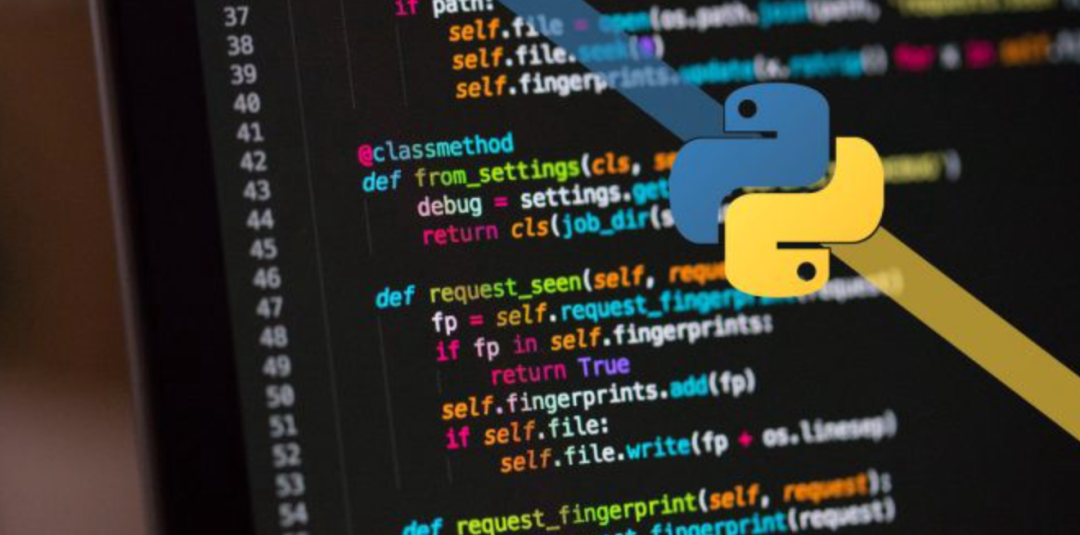
如果你想在Linux服务器上周期性地执行某个 Python 脚本,最出名的选择应该是 Crontab 脚本,但是 Crontab 具有以下缺点:
`1.不方便执行秒级的任务。`
`2.当需要执行的定时任务有上百个的时候,Crontab的管理就会特别不方便。`
另外一个选择是 Celery,但是 Celery 的配置比较麻烦,如果你只是需要一个轻量级的调度工具,Celery 不会是一个好选择。
在你想要使用一个轻量级的任务调度工具,而且希望它尽量简单、容易使用、不需要外部依赖,最好能够容纳 Crontab 的所有基本功能,那么 Schedule 模块是你的不二之选。
使用它来调度任务可能只需要几行代码,感受一下:
# Python 实用宝典import scheduleimport timedef job(): print("I'm working...")schedule.every(10).minutes.do(job)while True: schedule.run_pending() time.sleep(1)
上面的代码表示每10分钟执行一次 job 函数,非常简单方便。你只需要引入 schedule 模块,通过调用scedule.every(时间数).时间类型.do(job) 发布周期任务。
发布后的周期任务需要用run_pending函数来检测是否执行,因此需要一个While循环不断地轮询这个函数。
下面具体讲讲Schedule模块的安装和初级、进阶使用方法。
1.准备
请选择以下任一种方式输入命令安装依赖:
- Windows 环境 打开 Cmd (开始-运行-CMD)。
- MacOS 环境 打开 Terminal (command+空格输入Terminal)。
- 如果你用的是 VSCode编辑器 或 Pycharm,可以直接使用界面下方的Terminal.
pip install schedule
2.基本使用
最基本的使用在文首已经提到过,下面给大家展示更多的调度任务例子:
# Python 实用宝典import scheduleimport timedef job(): print("I'm working...")# 每十分钟执行任务schedule.every(10).minutes.do(job)# 每个小时执行任务schedule.every().hour.do(job)# 每天的10:30执行任务schedule.every().day.at("10:30").do(job)# 每个月执行任务schedule.every().monday.do(job)# 每个星期三的13:15分执行任务schedule.every().wednesday.at("13:15").do(job)# 每分钟的第17秒执行任务schedule.every().minute.at(":17").do(job)while True: schedule.run_pending() time.sleep(1)
可以看到,从月到秒的配置,上面的例子都覆盖到了。不过如果你想只运行一次任务的话,可以这么配:
# Python 实用宝典import scheduleimport timedef job_that_executes_once(): # 此处编写的任务只会执行一次... return schedule.CancelJobschedule.every().day.at('22:30').do(job_that_executes_once)while True: schedule.run_pending() time.sleep(1)
参数传递
如果你有参数需要传递给作业去执行,你只需要这么做:
# Python 实用宝典import scheduledef greet(name): print('Hello', name)# do() 将额外的参数传递给job函数schedule.every(2).seconds.do(greet, name='Alice')schedule.every(4).seconds.do(greet, name='Bob')
获取目前所有的作业
如果你想获取目前所有的作业:
# Python 实用宝典import scheduledef hello(): print('Hello world')schedule.every().second.do(hello)all_jobs = schedule.get_jobs()
取消所有作业
如果某些机制触发了,你需要立即清除当前程序的所有作业:
# Python 实用宝典import scheduledef greet(name): print('Hello {}'.format(name))schedule.every().second.do(greet)schedule.clear()
标签功能
在设置作业的时候,为了后续方便管理作业,你可以给作业打个标签,这样你可以通过标签过滤获取作业或取消作业。
# Python 实用宝典import scheduledef greet(name): print('Hello {}'.format(name))# .tag 打标签schedule.every().day.do(greet, 'Andrea').tag('daily-tasks', 'friend')schedule.every().hour.do(greet, 'John').tag('hourly-tasks', 'friend')schedule.every().hour.do(greet, 'Monica').tag('hourly-tasks', 'customer')schedule.every().day.do(greet, 'Derek').tag('daily-tasks', 'guest')# get_jobs(标签):可以获取所有该标签的任务friends = schedule.get_jobs('friend')# 取消所有 daily-tasks 标签的任务schedule.clear('daily-tasks')
设定作业截止时间
如果你需要让某个作业到某个时间截止,你可以通过这个方法:
# Python 实用宝典import schedulefrom datetime import datetime, timedelta, timedef job(): print('Boo')# 每个小时运行作业,18:30后停止schedule.every(1).hours.until("18:30").do(job)# 每个小时运行作业,2030-01-01 18:33 todayschedule.every(1).hours.until("2030-01-01 18:33").do(job)# 每个小时运行作业,8个小时后停止schedule.every(1).hours.until(timedelta(hours=8)).do(job)# 每个小时运行作业,11:32:42后停止schedule.every(1).hours.until(time(11, 33, 42)).do(job)# 每个小时运行作业,2020-5-17 11:36:20后停止schedule.every(1).hours.until(datetime(2020, 5, 17, 11, 36, 20)).do(job)
截止日期之后,该作业将无法运行。
立即运行所有作业,而不管其安排如何
如果某个机制触发了,你需要立即运行所有作业,可以调用schedule.run_all():
# Python 实用宝典import scheduledef job_1(): print('Foo')def job_2(): print('Bar')schedule.every().monday.at("12:40").do(job_1)schedule.every().tuesday.at("16:40").do(job_2)schedule.run_all()# 立即运行所有作业,每次作业间隔10秒schedule.run_all(delay_seconds=10)
3.高级使用
装饰器安排作业
如果你觉得设定作业这种形式太啰嗦了,也可以使用装饰器模式:
# Python 实用宝典from schedule import every, repeat, run_pendingimport time# 此装饰器效果等同于 schedule.every(10).minutes.do(job)@repeat(every(10).minutes)def job(): print("I am a scheduled job")while True: run_pending() time.sleep(1)
并行执行
默认情况下,Schedule 按顺序执行所有作业。其背后的原因是,很难找到让每个人都高兴的并行执行模型。
不过你可以通过多线程的形式来运行每个作业以解决此限制:
# Python 实用宝典import threadingimport timeimport scheduledef job1(): print("I'm running on thread %s" % threading.current_thread())def job2(): print("I'm running on thread %s" % threading.current_thread())def job3(): print("I'm running on thread %s" % threading.current_thread())def run_threaded(job_func): job_thread = threading.Thread(target=job_func) job_thread.start()schedule.every(10).seconds.do(run_threaded, job1)schedule.every(10).seconds.do(run_threaded, job2)schedule.every(10).seconds.do(run_threaded, job3)while True: schedule.run_pending() time.sleep(1)
日志记录
Schedule 模块同时也支持 logging 日志记录,这么使用:
# Python 实用宝典import scheduleimport logginglogging.basicConfig()schedule_logger = logging.getLogger('schedule')# 日志级别为DEBUGschedule_logger.setLevel(level=logging.DEBUG)def job(): print("Hello, Logs")schedule.every().second.do(job)schedule.run_all()schedule.clear()
效果如下:
DEBUG:schedule:Running *all* 1 jobs with 0s delay in betweenDEBUG:schedule:Running job Job(interval=1, unit=seconds, do=job, args=(), kwargs={})Hello, LogsDEBUG:schedule:Deleting *all* jobs
异常处理
Schedule 不会自动捕捉异常,它遇到异常会直接抛出,这会导致一个严重的问题:后续所有的作业都会被中断执行,因此我们需要捕捉到这些异常。
你可以手动捕捉,但是某些你预料不到的情况需要程序进行自动捕获,加一个装饰器就能做到了:
# Python 实用宝典import functoolsdef catch_exceptions(cancel_on_failure=False): def catch_exceptions_decorator(job_func): @functools.wraps(job_func) def wrapper(*args, **kwargs): try: return job_func(*args, **kwargs) except: import traceback print(traceback.format_exc()) if cancel_on_failure: return schedule.CancelJob return wrapper return catch_exceptions_decorator@catch_exceptions(cancel_on_failure=True)def bad_task(): return 1 / 0schedule.every(5).minutes.do(bad_task)
这样,bad_task在执行时遇到的任何错误,都会被catch_exceptions 捕获,这点在保证调度任务正常运转的时候非常关键。
我们的文章到此就结束啦,如果你喜欢今天的Python 实战教程,请持续关注Python实用宝典。
— 完 —
推荐↓↓↓

程序员狗哥
狗哥,分享一些程序员关注的各种好用、好玩的东西,助力大家快速成长!欢迎关注!
79篇原创内容
公众号
整理不易,请点赞和在看

